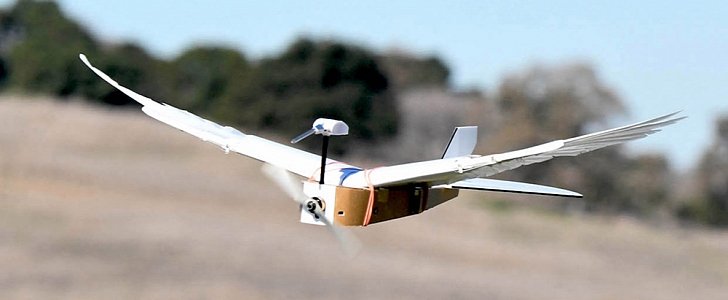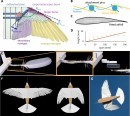Building a drone that can fly like a bird by using feathered wings and actual feathers may seem counterproductive or even silly, though awesome from a high school student’s perspective, and it’s never been done before.
It’s also of paramount importance because, for all the tech mankind has at its disposal, we’ve not been able to fully understand the way in which birds are able to fly, let alone replicate the movement. A group of researchers from Stanford University have made a step closer to that, with a new UAV they call PigeonBot.
PigeonBot is a small, very light drone that uses a front propeller to take flight but actual wings to change directions and roll. Unlike regular drones, the movements are graceful and effortless, and that’s solely because they have been able to replicate part of the movement used by pigeons in flight.
The study of the biomechanics of a bird’s wings is published in this month’s issue of Science, while the study on PigeonBot can be found in full in Science Robotics.
Mechanical engineering professor David Lentink, head of Stanford’s Bio-Inspired Research & Design (BIRD) Lab, asked his students to analyze pigeons and determine how they are able to move in flight and then incorporate the findings into “a morphing biohybrid robot” that would feature real flight feathers.
PigeonBot features 40 pigeon feathers and a very light body with a front propeller. It can turn sharp corners, fly in tight spaces and move easily through forests and crowded urban environments, much like its avian counterpart (it doesn’t make as much mess as that one, though). In doing so, it uses the same kind of morphing and flexion birds do when gliding.
Lentink believes their findings will help make drones safer and improve their performance. Wing design in small aircraft would also stand to benefit from this study. While PigeonBot is still a concept, Lentink is working on a tail also made from feathers, while looking to build a similar drone based off a falcon.
PigeonBot is a small, very light drone that uses a front propeller to take flight but actual wings to change directions and roll. Unlike regular drones, the movements are graceful and effortless, and that’s solely because they have been able to replicate part of the movement used by pigeons in flight.
The study of the biomechanics of a bird’s wings is published in this month’s issue of Science, while the study on PigeonBot can be found in full in Science Robotics.
Mechanical engineering professor David Lentink, head of Stanford’s Bio-Inspired Research & Design (BIRD) Lab, asked his students to analyze pigeons and determine how they are able to move in flight and then incorporate the findings into “a morphing biohybrid robot” that would feature real flight feathers.
PigeonBot features 40 pigeon feathers and a very light body with a front propeller. It can turn sharp corners, fly in tight spaces and move easily through forests and crowded urban environments, much like its avian counterpart (it doesn’t make as much mess as that one, though). In doing so, it uses the same kind of morphing and flexion birds do when gliding.
Lentink believes their findings will help make drones safer and improve their performance. Wing design in small aircraft would also stand to benefit from this study. While PigeonBot is still a concept, Lentink is working on a tail also made from feathers, while looking to build a similar drone based off a falcon.





